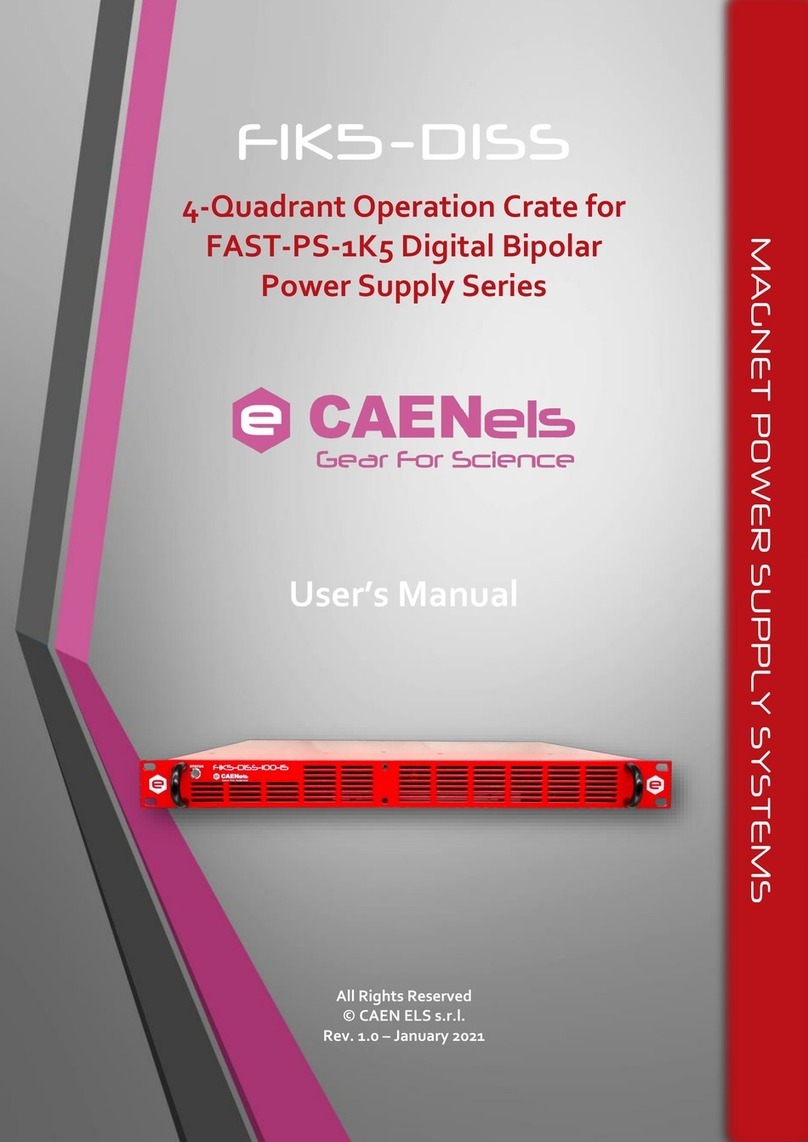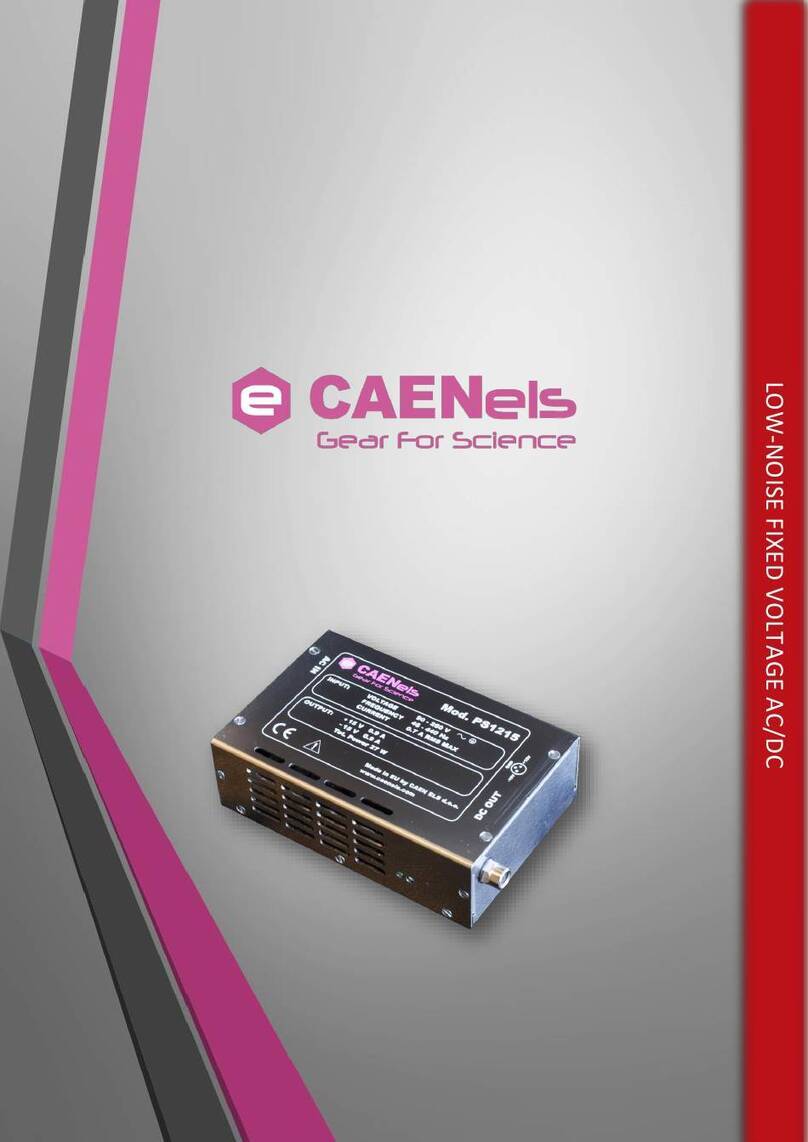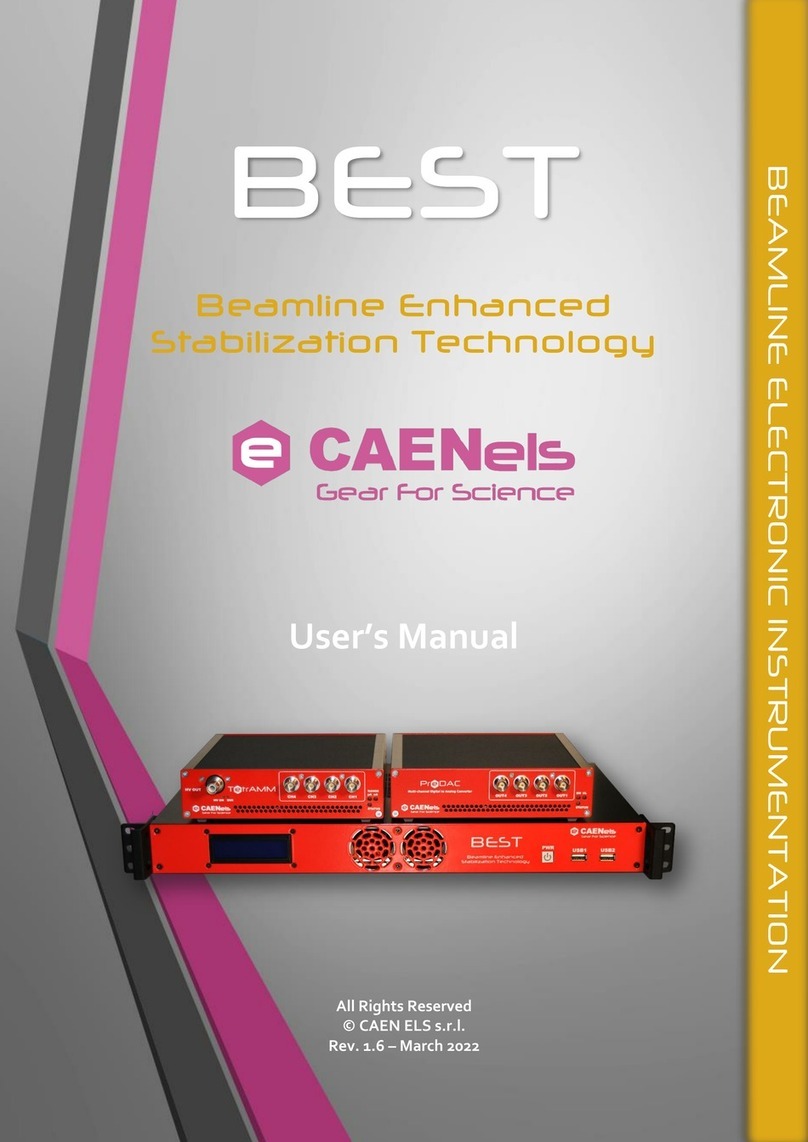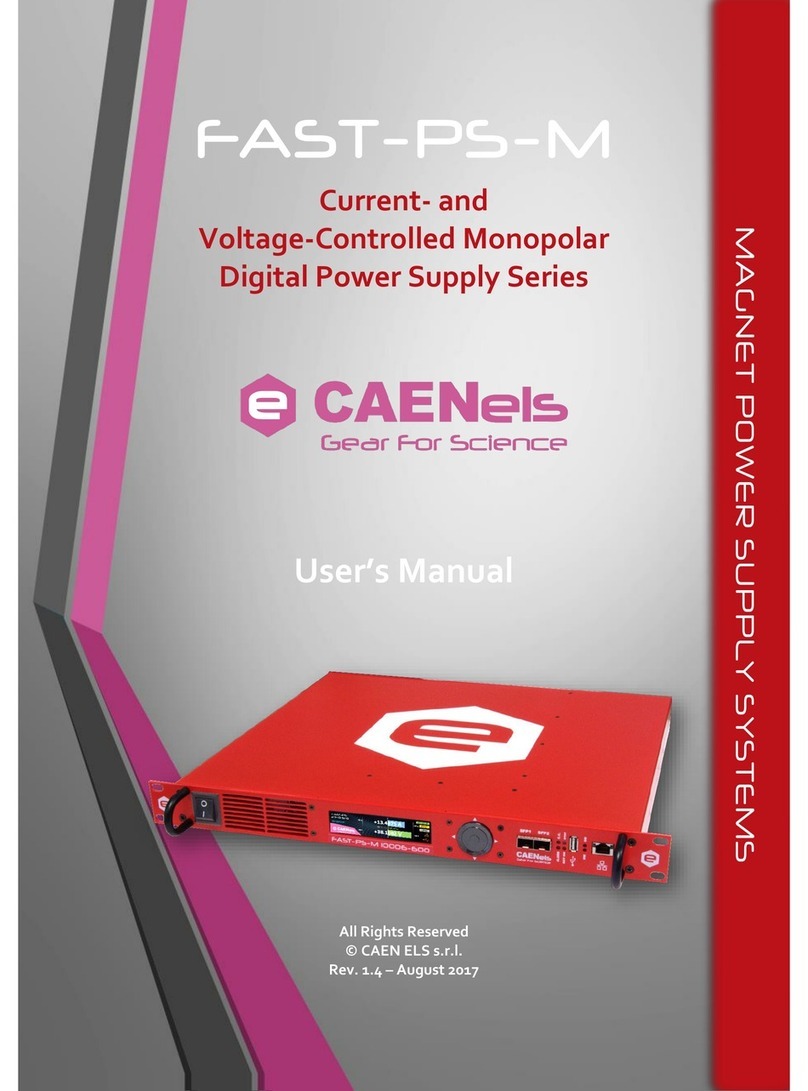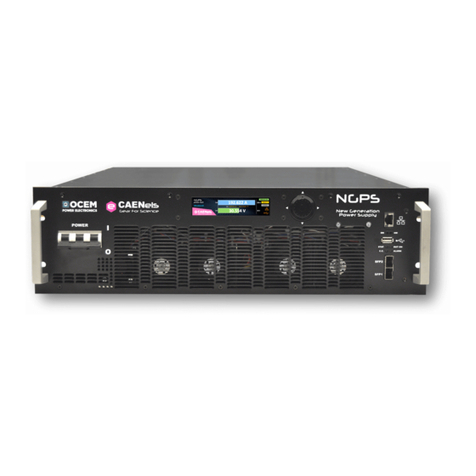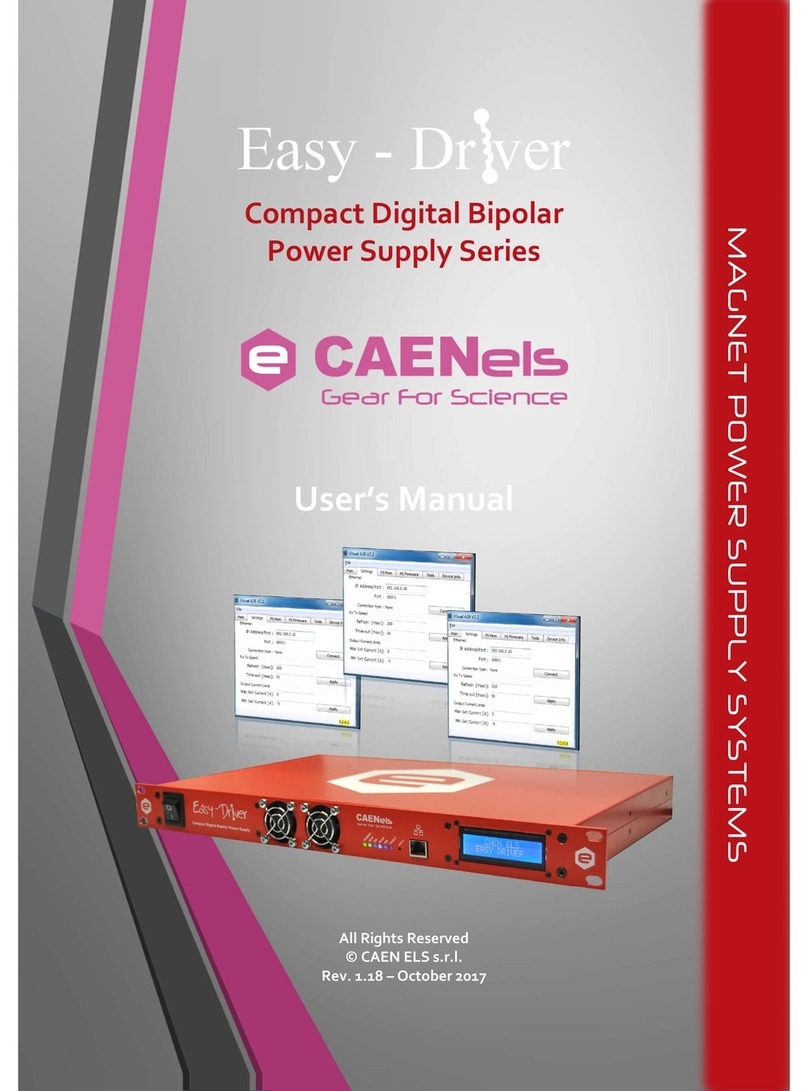FAST-PS-1K5 –User’s Manual
4
Table Of Contents
1. INTRODUCTION..............................................................................................10
1.1 FAST-PS-1K5 OVERVIEW ...........................................................................10
1.2 FAST-PS-1K5 AT A GLANCE ........................................................................11
1.3 MODES OF OPERATION..................................................................................13
Regulation Mode......................................................................................131.3.1
Control Mode...........................................................................................131.3.2
Update Mode............................................................................................141.3.3
1.4 EXTERNAL INTERLOCKS AND STATUS...........................................................14
Interlock Enable/Disable Mask................................................................151.4.1
Interlock Activation Level Mask ..............................................................151.4.2
Interlock Intervention Time......................................................................161.4.3
Interlock Identification Name ..................................................................161.4.4
Output Status Signal –user-defined application .....................................171.4.5
1.5 REMOTE SENSING .........................................................................................17
1.6 TRIGGER,ANALOG CONTROL AND AUX INPUTS ..........................................19
Trigger input............................................................................................191.6.1
Analog Control Input...............................................................................201.6.2
Configurable AUX Input..........................................................................211.6.1
1.7 OUTPUT CONNECTORS...................................................................................22
Models up to 59 V....................................................................................221.7.1
Models from 60 V to 100 V......................................................................221.7.2
1.8 FRONT PANEL INDICATORS...........................................................................23
1.9 INTERNAL PROTECTIONS...............................................................................23
Earth Leakage Current ............................................................................241.9.1
Earth Fuse................................................................................................241.9.2
Regulation Fault ......................................................................................241.9.3
Input OVerCurrent - OVC .......................................................................251.9.4
OVerPower - OVP ...................................................................................251.9.5
Crow-Bar .................................................................................................261.9.6
Crowbar Unwanted Triggering, Please Read...................................261.9.6.1
Quench Protection ...................................................................................261.9.7
OVerTemperature - OVT .........................................................................271.9.8
DC-Link Undervoltage.............................................................................271.9.9
1.10 WAVEFORM ..................................................................................................28
2. INSTALLATION...............................................................................................29
2.1 PREPARATION FOR USE..................................................................................29
2.2 INITIAL INSPECTION ......................................................................................29
2.3 MOUNTING....................................................................................................29
Rack Mounting.........................................................................................302.3.1
Desktop use..............................................................................................302.3.2
2.4 AC INPUT POWER CONNECTION ...................................................................31
AC Source requirement............................................................................312.4.1
AC Input Cord..........................................................................................312.4.2
2.5 LOAD CONNECTION.......................................................................................32
Wire selection...........................................................................................322.5.1
2.6 REMOTE SENSING .........................................................................................35






